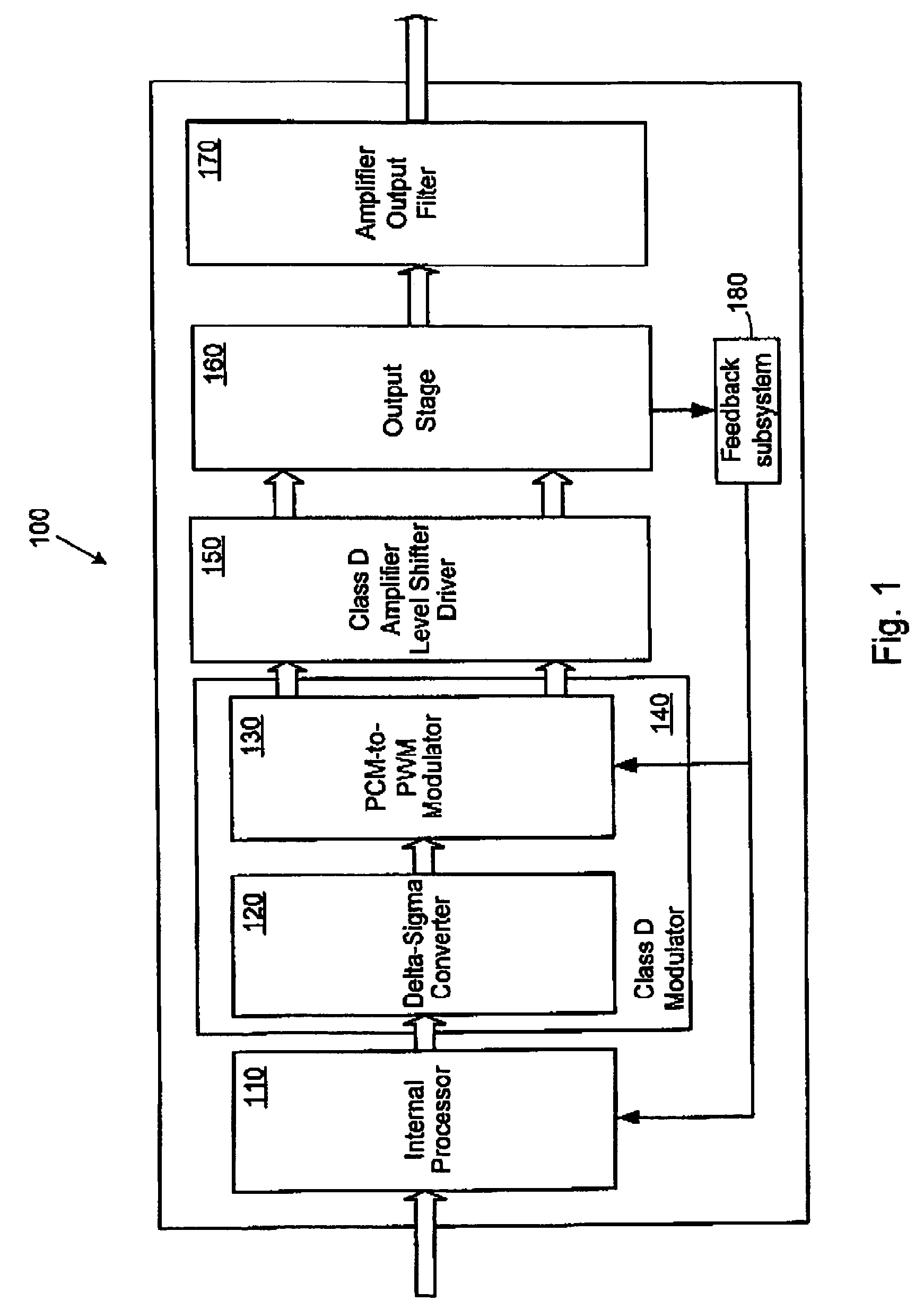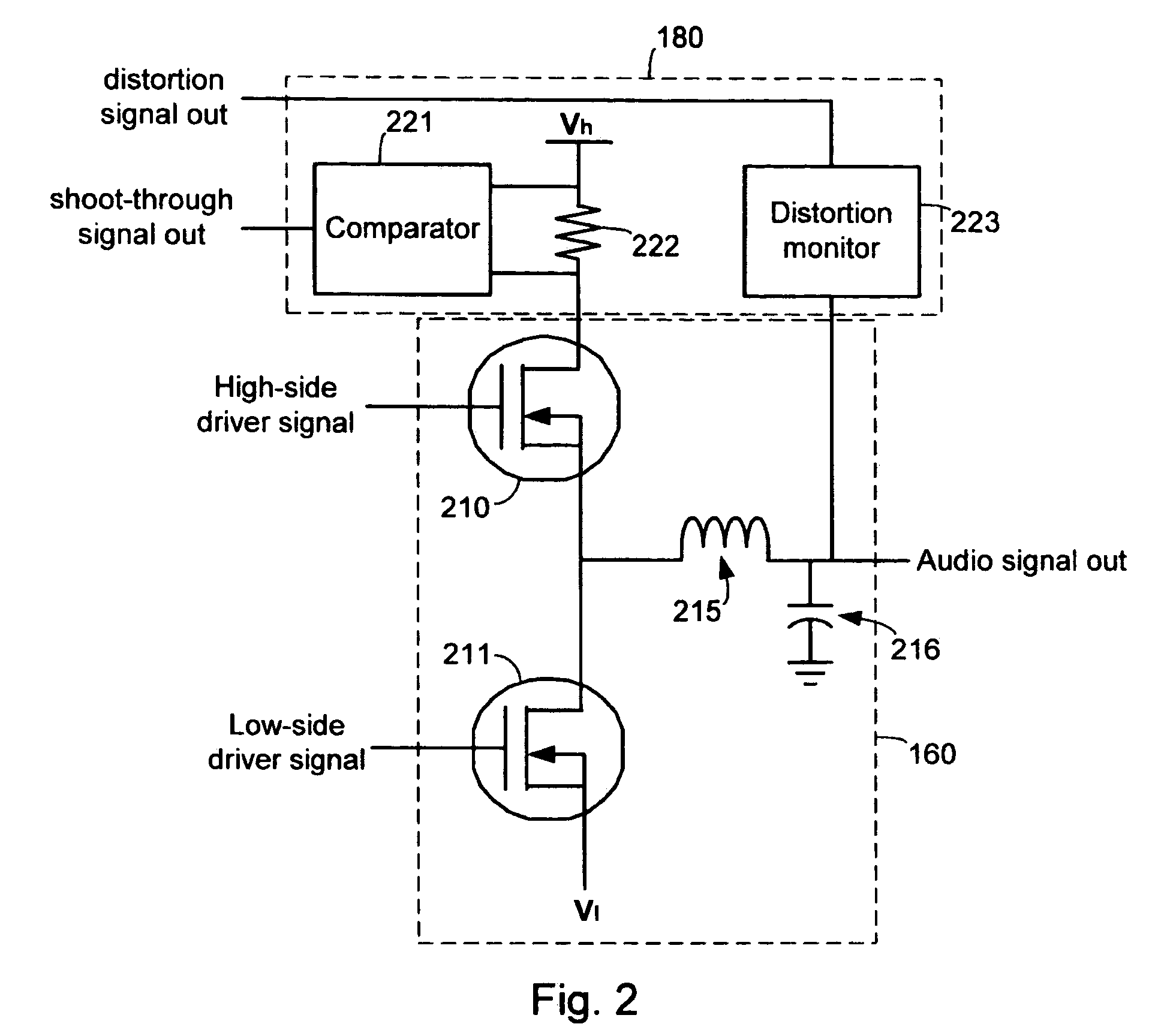Systems and methods for automatically adjusting channel timing
a technology of automatic adjustment and channel timing, applied in the field of audio amplification systems, can solve the problems of low performance applications, complex and costly applications to implement, and unwidely accepted solutions, and achieve the effect of improving dead time and shooting conditions
- Summary
- Abstract
- Description
- Claims
- Application Information
AI Technical Summary
Benefits of technology
Problems solved by technology
Method used
Image
Examples
Embodiment Construction
[0024]One or more embodiments of the invention are described below. It should be noted that these and any other embodiments described below are exemplary and are intended to be illustrative of the invention rather than limiting.
[0025]As described herein, various embodiments of the invention comprise systems and methods for automatically adjusting the alignment of high-side and low-side pulse width modulated signals to improve dead time and shoot-through conditions.
[0026]One embodiment comprises a method for adjusting the relative timing of high-side and low-side signals in a digital PWM amplifier. Because the FETs in the output stage of the PWM amplifier do not switch perfectly (i.e., they do not switch instantaneously between being completely turned on and completely turned off), there is a period of time during which the FETs transition from a state in which a first one is turned on and a second one is turned off, to a state in which the first one is turned off and the second one ...
PUM
 Login to View More
Login to View More Abstract
Description
Claims
Application Information
 Login to View More
Login to View More - R&D
- Intellectual Property
- Life Sciences
- Materials
- Tech Scout
- Unparalleled Data Quality
- Higher Quality Content
- 60% Fewer Hallucinations
Browse by: Latest US Patents, China's latest patents, Technical Efficacy Thesaurus, Application Domain, Technology Topic, Popular Technical Reports.
© 2025 PatSnap. All rights reserved.Legal|Privacy policy|Modern Slavery Act Transparency Statement|Sitemap|About US| Contact US: help@patsnap.com



